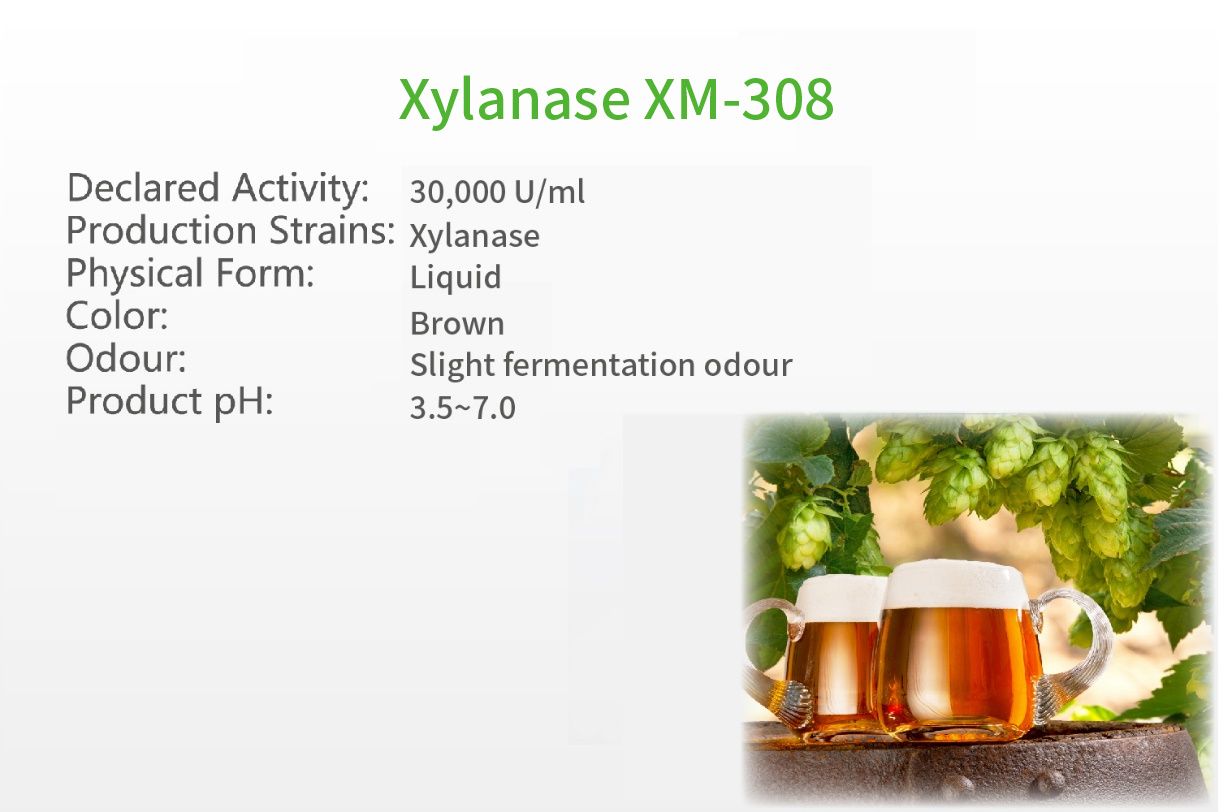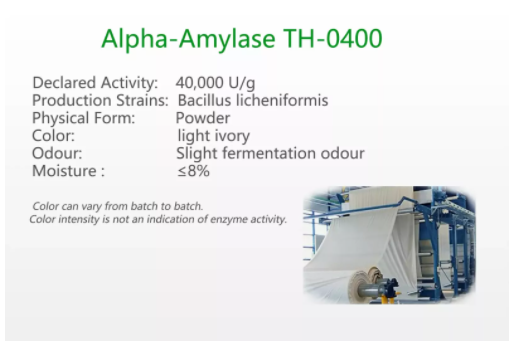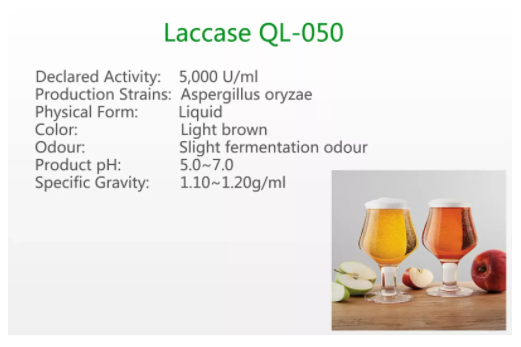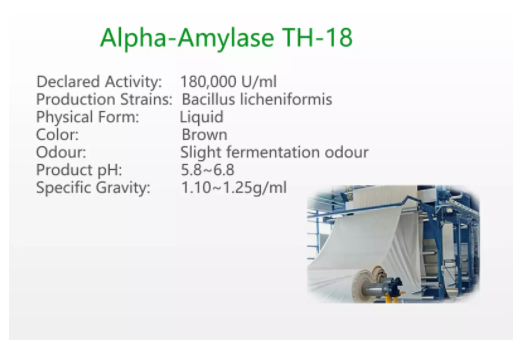Products
Contact us
Edna Yang
Tel: +86-510-8525-9383
Cell: +86-151-5221-3005
Email: edna.yang@bolibio.com
Jiangsu Boli Bioproducts Co.,Ltd.
Add: 93 Yangzhou Road, Jiangyan Economic Development Zone, Jiangsu 225500, China
Jiangsu Boyang Bioproducts Co., Ltd.
Add: 30 Tongwang Road, Nantong Economic Development Zone, Jiangsu 226010, China
Product Description
Description
Pullulanase PU-730 is produced from selected strains of Bacillus licheniformis through submerged fermentation, extraction and refining processes. It is so-named because it can specifically hydrolyze pullulan (maltotriose, α-1, 6 glycosidic bond linking polymer). It belongs to amylase which specifically cleaves the α-1, 6 glycosidic bonds of the branching point of amylopectin and cut the entire branch structure to form amylose.
PU-730 is typically used in combination with glucoamylase to produce high glucose syrup and high maltose syrup from liquefied starch.
Product Characteristics
|
Declared Enzyme:
|
Pullulanase
|
|
Systematic Name:
|
EC 3.2.1.41, Pullulan 6 - glucanohydrolase
|
|
Appearance:
|
Sepia Brown Liquid
|
|
Activity:
|
4,200 U/ml (minimum)
|
|
Product pH:
|
3.0 to 5.0
|
|
Specific gravity:
|
1.10 to 1.20 g/ml
|
Effect of pH
The effective pH range for PU-730 is from 4.0 to 5.0; its optimum pH ranges from 4.2 to 4.6. See Figure 1.
Effect of temperature
PU-730 works effectively at temperatures from 50 to 65°C; its optimum temperature range is from 55 to 60°C. See Figure 2.

Applications and Benefits
[Production of High-glucose Syrup]
Glucoamylase is capable of hydrolyzing alpha-1, 4 glycosidic bonds whilst slow in hydrolysis of alpha-1, 6 glycosidic bonds, which constitutes an obstacle in the production of high-glucose syrup. Use of pullulanase in combination with glucoamylase during the saccharification stage can increase the hydrolysis rate of starch, reduce the dosage of glucoamylase, shorten the reaction time, uplift the yield and improve the purity of glucose.
Glucoamylase is capable of hydrolyzing alpha-1, 4 glycosidic bonds whilst slow in hydrolysis of alpha-1, 6 glycosidic bonds, which constitutes an obstacle in the production of high-glucose syrup. Use of pullulanase in combination with glucoamylase during the saccharification stage can increase the hydrolysis rate of starch, reduce the dosage of glucoamylase, shorten the reaction time, uplift the yield and improve the purity of glucose.
[Production of Extra-High Maltose Syrup]
In the production of maltose, alpha-amylase is first used to liquefy the starch, then fungal alpha-amylase or beta-amylase shall be used to decompose starch, so the maltose content of the final product is about 50% to 60%, referred to as a high maltose syrup. Use of pullulanase in combination with alpha-amylase and beta-amylase can produce extra-high maltose syrup with maltose content above 80%.
In the production of maltose, alpha-amylase is first used to liquefy the starch, then fungal alpha-amylase or beta-amylase shall be used to decompose starch, so the maltose content of the final product is about 50% to 60%, referred to as a high maltose syrup. Use of pullulanase in combination with alpha-amylase and beta-amylase can produce extra-high maltose syrup with maltose content above 80%.
[Production of Beer]
In the production of beer, if the starch is not completely decomposed, the fermentable sugar content will be decreased, and the beer made from fermentation will not meet the requirements. The synergistic effect of pullulanase with alpha-amylase will enable pullulanase to completely decompose starch contained in the raw materials, reduce the wort content in the beta-limit dextrin, increase the amount of fermentable sugar, thus greatly improve the fermentation efficacy.
In the production of beer, if the starch is not completely decomposed, the fermentable sugar content will be decreased, and the beer made from fermentation will not meet the requirements. The synergistic effect of pullulanase with alpha-amylase will enable pullulanase to completely decompose starch contained in the raw materials, reduce the wort content in the beta-limit dextrin, increase the amount of fermentable sugar, thus greatly improve the fermentation efficacy.
[Other Applications]
Adding pullulanase during saccharification in the production of MSG, alcohol, vinegar, and soy sauce can improve glucose content and shorten sacchrification time.
Pullulanase has also found its application in the production of high-amylose starches, which can be further processed into “resistant starch” that is not digested in the small intestine but fermented in the large intestine by gut bacteria, producing short-chain fatty acids such as butyrates that are beneficial for colon health. High-amylose starches are also used in adhesive products and in the production of corrugated board and paper.
Packaging, Storage & Shelf-life
-
Standard packaging is 25kg, 30kg food-grade HDPE drums or 1125 kg IBC totes.
-
Typical shelf-life is six months if this product is stored below 25°C in its original packaging, sealed and unopened, protected from direct sunlight.
-
Its shelf-life will be eighteen months if this product is stored properly at 0 ∼10°C.
-
This product has been formulated for optimal stability. Prolonged storage and/or adverse conditions such as higher temperature may lead to a higher dosage requirement, therefore should be avoided.
Safe Handling of Enzymes
Inhalation of enzyme dust and mists should be avoided. In case of contact with the skin or eyes, promptly rinse with water for at least 15 minutes. For detailed handling information, please refer to the Safety Data Sheet.
Previous
Next
Previous
Next
Online message






















